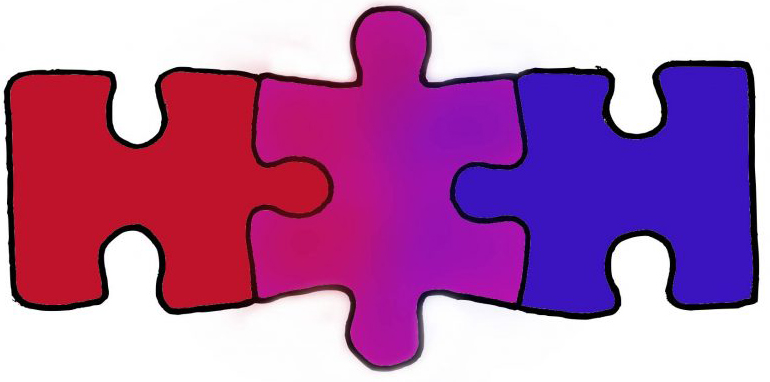74 Transitions: Developing Relationships between Ideas
Once you have a main idea, and supporting ideas, how can you be sure that your readers will understand the relationships between them? How are the ideas connected? One way to emphasize these relationships and logical connections is using clear transitions between ideas as illustrated in Figure 7.4.

Figure 7.4: Transitioning between ideas
Think of transitions as segues that help the reader move from one idea to another. Rather than leaping to a new idea, a transition weaves thoughts together. Transitions signal the order of ideas, highlight relationships, unify concepts, let readers know what’s coming next, or remind them about what’s already been covered. When instructors or peers comment that your writing is choppy, abrupt, or needs to flow better, you might need to work on building some better transitions into your writing. If a reader comments that they are not sure how something relates to your thesis or main idea, a transition is probably the right tool for the job. You should build solid transitions during the drafting phase. See Film Clip 7.1 about transitional words.
Film Clip 7.1: Transitional words [1:23]
Sentence-level transitions
Transitions between sentences often use connecting words to emphasize relationships between one sentence and another. See Table 7.3 for examples of how to show connections between ideas in adjacent sentences.
Table 7.3: Examples of showing connections between sentences.
| Showing connections | Examples |
|---|---|
|
Words that indicate similarity include: also, similarly, and likewise. |
In my practice, I have observed nurses demonstrate empathy by engaging in active listening with clients. In the same way, I have practiced empathetic behaviours by acknowledging clients’ feelings and probing further about their emotions. |
|
Words that indicate contrast include: despite, on the other hand, in contrast, and yet. |
Mortecai (2019) found that handwashing is vital to reducing nosocomial infections. However, Barton (2020) and Latai and Leung (2020) have indicated that only 75% of healthcare providers effectively practice hand hygiene. |
|
Words that indicate examples include: for instance, for example, specifically, and to illustrate. |
The cost of college tuition is higher than ever, so students are becoming increasingly motivated to keep costs as low as possible. For example, some students are renting books instead of buying books. |
|
Words that indicate cause and effect include: therefore, so, and thus. |
Davaine notes that sugar leads to ill-health effects. Therefore, it is important to examine sugar consumption and read food labels. |
|
Words that indicate additional support include: also, besides, equally important, and additionally. |
Researchers have noted that sugar leads to ill-health effects. Equally important, it has been noted that foods high in saturated fats increase risks for cardiovascular disease. |
Paragraph- or section-level transitions
It’s important to consider how to emphasize the relationships not just between sentences but also between paragraphs. See Table 7.4 for strategies to help you show your readers how the main ideas of your paragraphs relate to each other and also to your paper’s main idea/thesis.
Table 7.4: Examples of showing connections between paragraphs
| Showing connections | Examples |
|---|---|
|
Signposts are words or phrases that indicate where you are in the process of organizing an idea. They might indicate that you are introducing a new concept, summarizing an idea, or concluding your thoughts. They may include words like: first, then, next, finally, in sum, and in conclusion. |
The first problem with this practice is… The next thing to consider is… Some final thoughts about this topic are… |
|
As you conclude a paragraph, you may want to give a hint about what’s coming in the next paragraph or section. Forward-looking sentences at the end of paragraphs can help provide a transition and prepare your readers for the next paragraphs. Don’t leave your readers hanging by introducing a completely new or unrelated topic. |
Walking has positive effects on physical health, but it also offers other benefits. |
|
Rather than concluding a paragraph by looking forward, you might instead begin a paragraph by looking back. Backward-looking sentences at the beginning of paragraphs can be helpful as a review. |
While the physical benefits of walking are great, the benefits of walking to mental health cannot be overlooked. |
A word of caution
Be careful not to overuse transitions in your writing – your readers will quickly find them tiring or obvious. Try to find creative ways to let your readers know where they are situated within the ideas presented in your writing. Here is an example of the overuse of transitions:
Sugar is a common additive in many foods. Historically, it was socialized as a luxury food item (let them eat cake!). Today, sugar is highly pervasive. Similarly, it is also highly addictive, as research has demonstrated tolerances to sugar and the desire to consume more, the more one eats. Consequently, we are seeing ill-health effects from the overconsumption of sugar. And yet, little is being done to limit sugar uptake.
Attribution statement
Content from this page was remixed with our own original content, and adapted, with editorial and organizational changes, from:
The Word on College Reading and Writing by Carol Burnell, Jaime Wood, Monique Babin, Susan Pesznecker, and Nicole Rosevear, licensed under a Creative Commons Attribution-NonCommercial 4.0 International License, except where otherwise noted.Download for free at: https://openoregon.pressbooks.pub/wrd/

